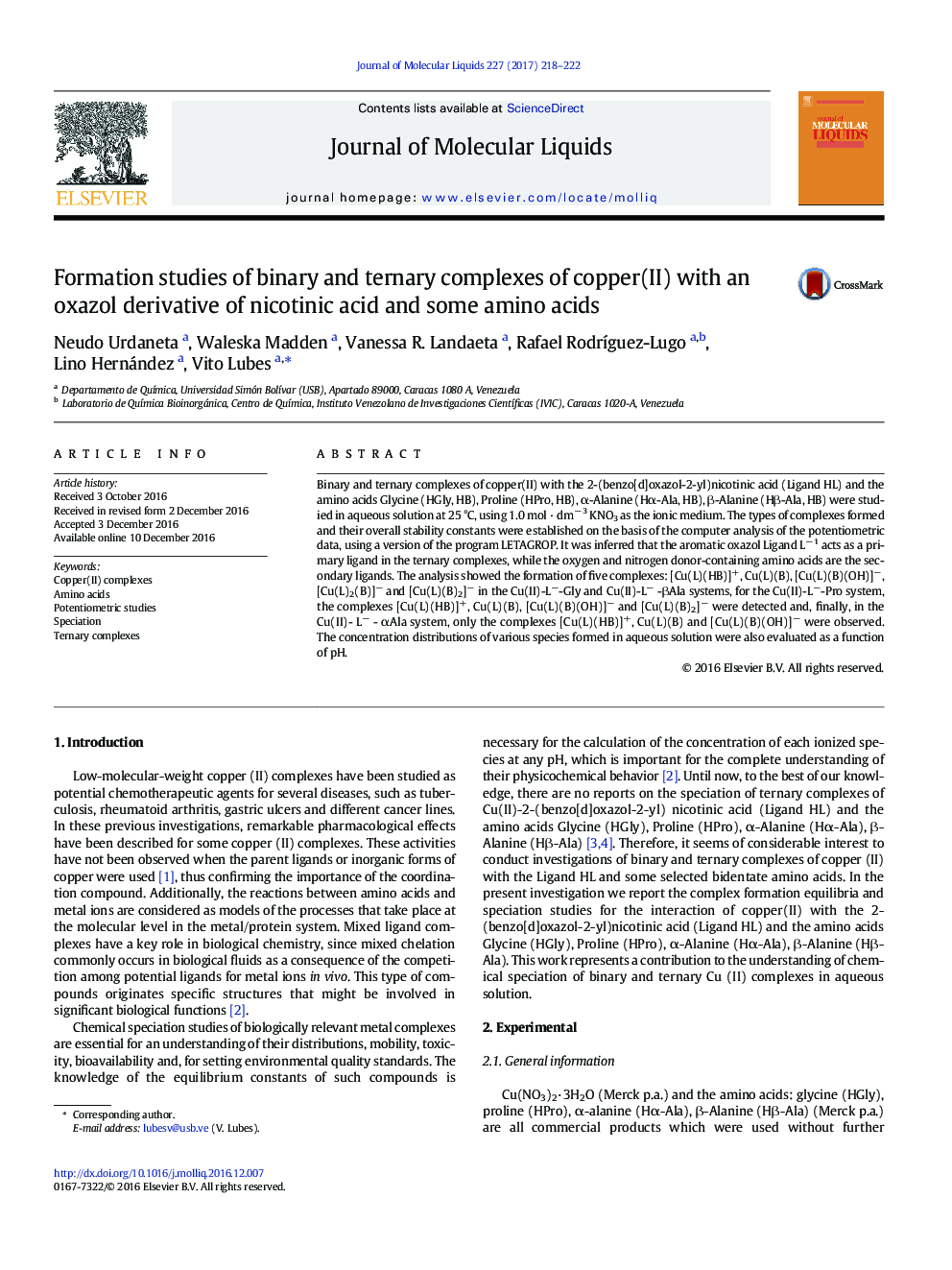| Article ID | Journal | Published Year | Pages | File Type |
|---|---|---|---|---|
| 5409466 | Journal of Molecular Liquids | 2017 | 5 Pages |
Abstract
Binary and ternary complexes of copper(II) with the 2-(benzo[d]oxazol-2-yl)nicotinic acid (Ligand HL) and the amino acids Glycine (HGly, HB), Proline (HPro, HB), α-Alanine (Hα-Ala, HB), β-Alanine (Hβ-Ala, HB) were studied in aqueous solution at 25 °C, using 1.0 mol · dmâ 3 KNO3 as the ionic medium. The types of complexes formed and their overall stability constants were established on the basis of the computer analysis of the potentiometric data, using a version of the program LETAGROP. It was inferred that the aromatic oxazol Ligand Lâ 1 acts as a primary ligand in the ternary complexes, while the oxygen and nitrogen donor-containing amino acids are the secondary ligands. The analysis showed the formation of five complexes: [Cu(L)(HB)]+, Cu(L)(B), [Cu(L)(B)(OH)]â, [Cu(L)2(B)]â and [Cu(L)(B)2]â in the Cu(II)-Lâ-Gly and Cu(II)-Lâ -βAla systems, for the Cu(II)-Lâ-Pro system, the complexes [Cu(L)(HB)]+, Cu(L)(B), [Cu(L)(B)(OH)]â and [Cu(L)(B)2]â were detected and, finally, in the Cu(II)- Lâ - αAla system, only the complexes [Cu(L)(HB)]+, Cu(L)(B) and [Cu(L)(B)(OH)]â were observed. The concentration distributions of various species formed in aqueous solution were also evaluated as a function of pH.
Related Topics
Physical Sciences and Engineering
Chemistry
Physical and Theoretical Chemistry
Authors
Neudo Urdaneta, Waleska Madden, Vanessa R. Landaeta, Rafael RodrÃguez-Lugo, Lino Hernández, Vito Lubes,
